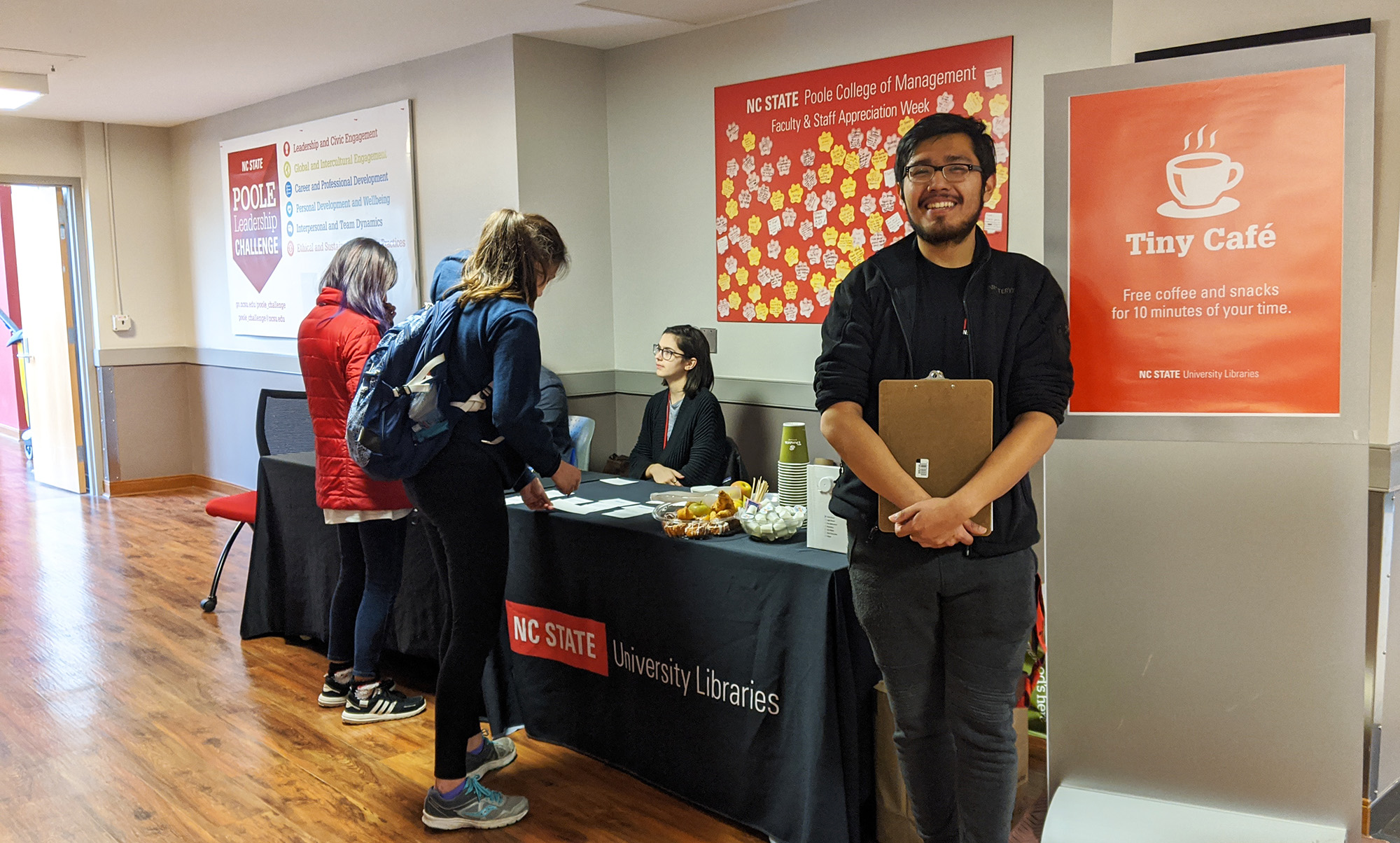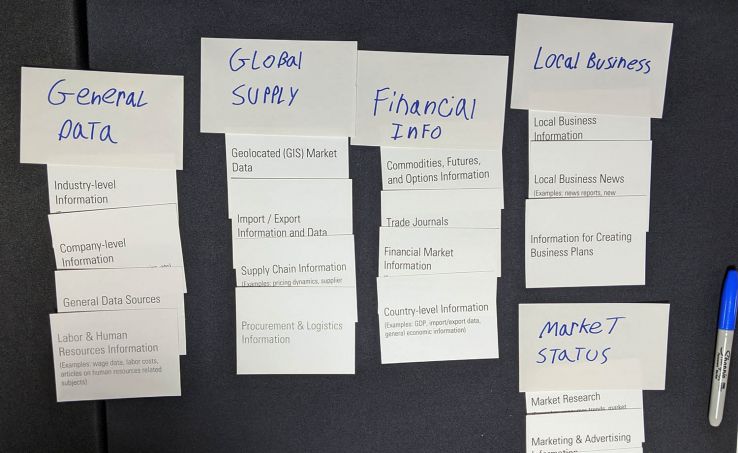Business Research Guide + Tiny Café
Students told us about their expectations regarding a business research guide. We also asked about how they conducted research for business-related class projects.

Overview
Questions
- What do students expect of a business research guide?
- What do they have trouble researching?
- What is their mental model for the kinds of information on the research guide?
Our goal was to use this information to revise the existing business research guide to meet those expectations and needs.
Findings
Expectations for a business research guide
- In-depth, easy-to-access introduction
- Providing access to case studies
- Instructional materials focused on searching for business resources
Research needs
- Sample business documents: business plan, spend analysis, …
- Understanding how to narrow their search, “find things about my exact topic specifically”
- Resources for free, licensed or open-licensed images to use in marketing materials for class assignments and projects
- Training on software like Vizio and Tableau (our workshops are a useful resource and could be featured in the guide)
Information architecture
Participants varied widely on how they sorted kinds of information through a card-sorting activity, and many participants felt unsure how to sort them. Somewhat common themes were data, market research, marketing, and local information. However, because there was no real consensus on information sorting, we can feel confident in coming up with a clear information architecture without conflicting with strong existing expectations.
How We Did It
We used the Tiny Café model for this user research. We set up a table with coffee and pastries from Panera in a busy hallway of Nelson Hall, home to Poole College of Management. We chose to conduct this Tiny Café there in order to get a sample of participants who are likely to be taking or have taken a business course. We had 20 participants, ranging from first-year undergraduate to a faculty member.
Interview
First, we conducted brief interviews with each participant about a recent research project and what they expected a "Business Research Guide" to contain.
Card sorting
After being interviewed, the participant approached the table to do a card-sorting activity. We gave them a stack of 18 kinds of business-related information, such as "Import/export information and data" and "Information for creating business plans." We asked the participant to group them into categories that made sense to them, and then label the category on a blank card.

Team
 Shaun BennettResearch Librarian for Business, Education, and Immersive Pedagogy
Shaun BennettResearch Librarian for Business, Education, and Immersive Pedagogy Meredith WynnWeb Developer
Meredith WynnWeb Developer Robin DavisAssociate Head, User Experience
Robin DavisAssociate Head, User Experience
 Alex CalderonAsk Us Student Worker
Alex CalderonAsk Us Student Worker